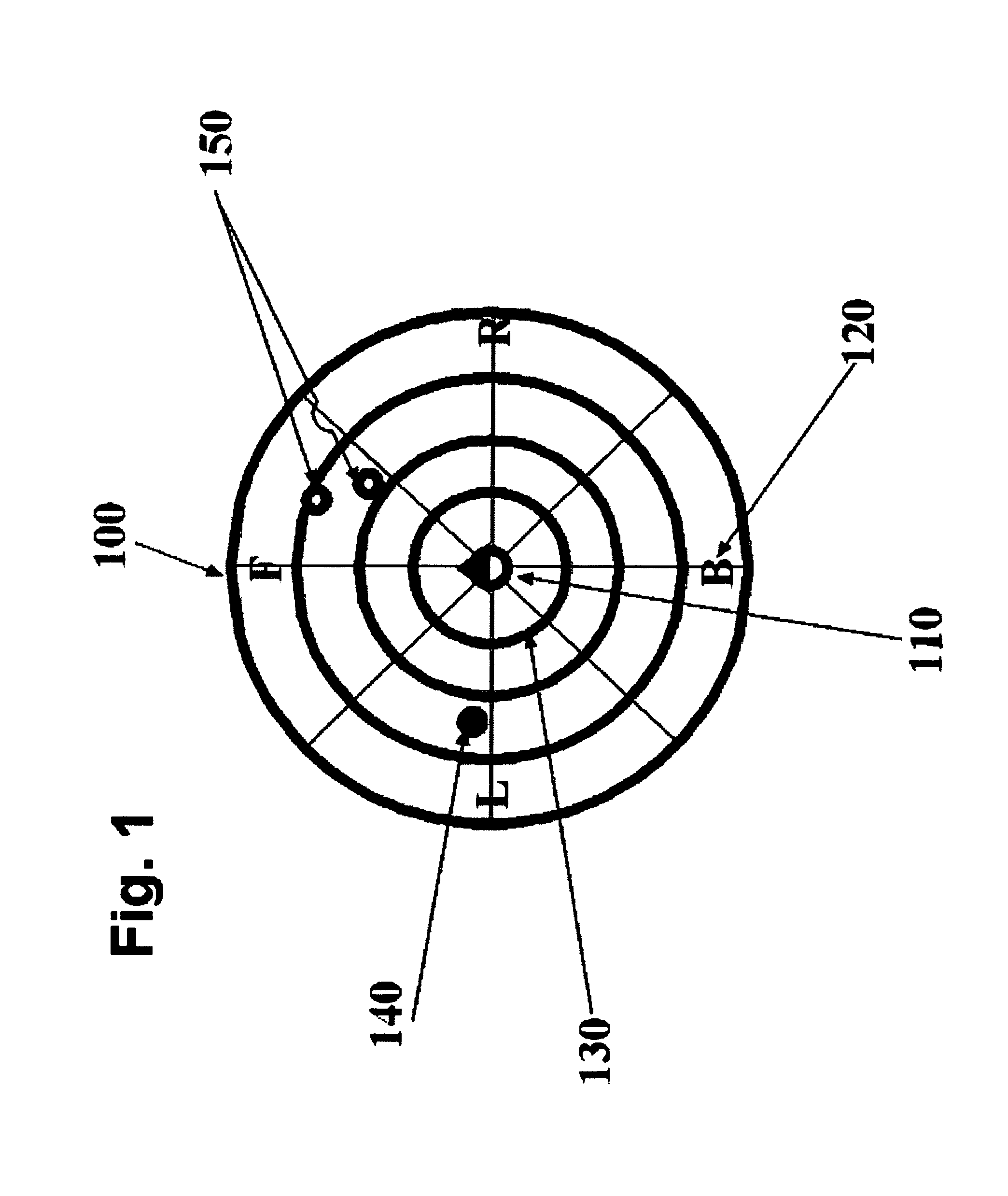System and method of detecting and navigating to empty parking spaces
a parking space and parking system technology, applied in the field of location-based navigation, can solve the problems of driver still, vehicle operator on a fruitless quest, prior art systems of only limited help to vehicle operators,
- Summary
- Abstract
- Description
- Claims
- Application Information
AI Technical Summary
Benefits of technology
Problems solved by technology
Method used
Image
Examples
Embodiment Construction
[0145]In all the figures of the drawing, sub-features and integral parts that correspond to one another bear the same reference symbol in each case:
[0146]Referring now to the figures of the drawings in details and first particularly to FIG. 1-5 thereof. There is shown an illustration of the method and system to detect and navigate to empty parking spaces.
[0147]The method contain the floating overlay display 100, a real-time floating overlay omni-directional circular display to overcome the limitations of the GPS based systems and the existing mapping systems.
[0148]The “user” will have easy way to figure out the distance and the direction to the empty parking spaces without GPS or any mapping.
[0149]The empty parking spaces will be displayed inside the graphical real-time omni-directional circular display in such way that the “user” will intuitively determine the distance and the direction to the empty parking spaces.
[0150]Each parking spaces will be shown with a simple color code to ...
PUM
 Login to View More
Login to View More Abstract
Description
Claims
Application Information
 Login to View More
Login to View More - R&D
- Intellectual Property
- Life Sciences
- Materials
- Tech Scout
- Unparalleled Data Quality
- Higher Quality Content
- 60% Fewer Hallucinations
Browse by: Latest US Patents, China's latest patents, Technical Efficacy Thesaurus, Application Domain, Technology Topic, Popular Technical Reports.
© 2025 PatSnap. All rights reserved.Legal|Privacy policy|Modern Slavery Act Transparency Statement|Sitemap|About US| Contact US: help@patsnap.com



